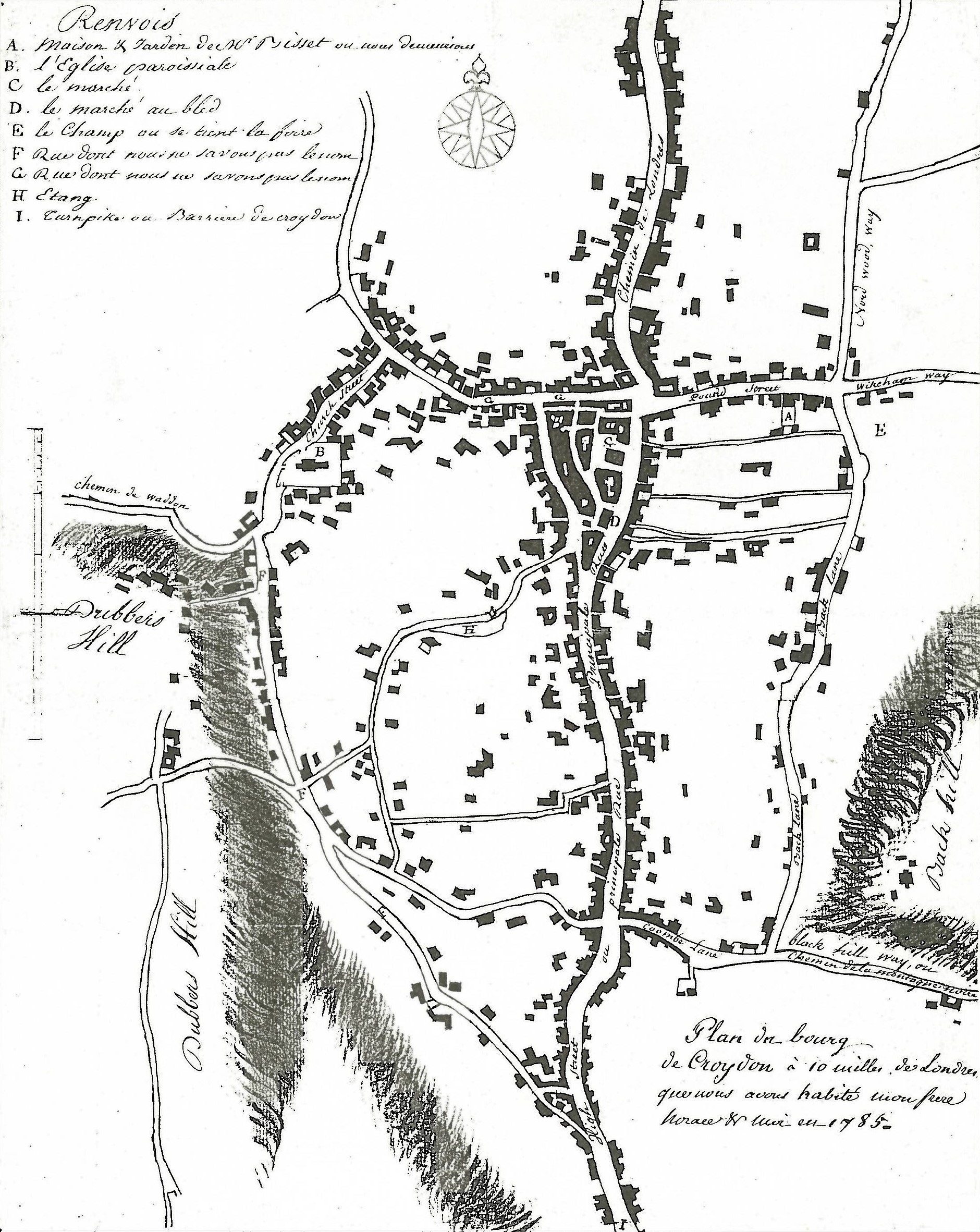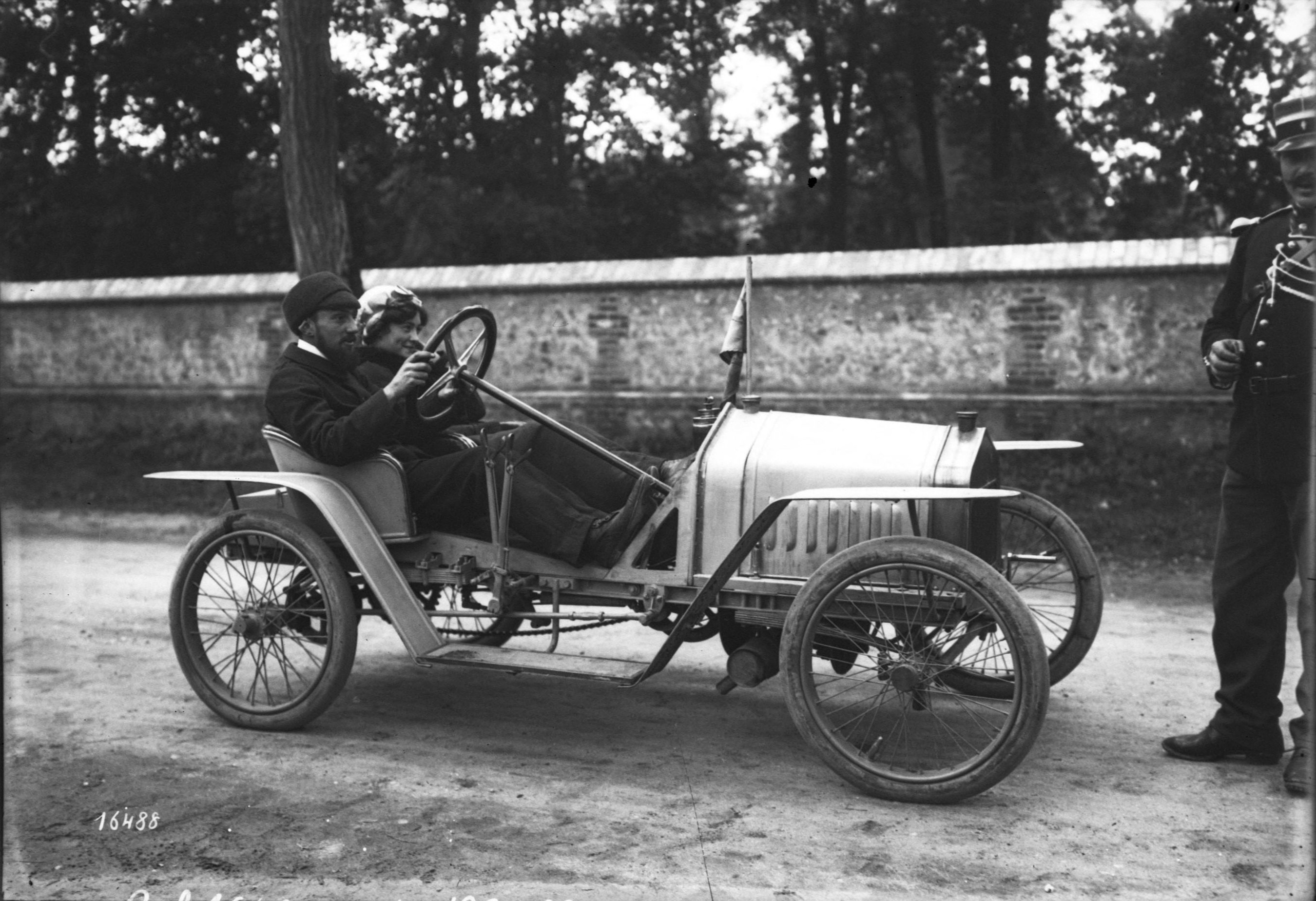|
Imperial (British Automobile)
Imperial was the name used for three separate makes of British car. Imperial (Manchester) 1901-1906 Imperial Autocar Manufacturing company was based in Manchester, England. Two cars were introduced in 1901 with either a 3.5 hp 2 cylinder engine under the seat or 6 hp 2 cylinder engine front mounted. Later the company sold French Lacoste et Battman models with Imperial bodies. The last ones seem to have been sold around 1906. Imperial (Croydon) 1904-1905 Another Imperial was made by the Anti-Vibrator company of Croydon, Surrey. These were electrically powered with a motor in each rear wheel. Unusually for the time, the car had integral construction of body and chassis. Imperial (London) 1914 The Imperial cyclecar was made by Implitico, a theatre lighting company in London, for one year only immediately before the First World War. The power came from an 8 hp V-twin Beardmore Precision Motorcycles, Precision engine with a "gearbox" giving seven forward speeds a ... [...More Info...] [...Related Items...] OR: [Wikipedia] [Google] [Baidu] |
Imperial (Manchester) 1904
Imperial is that which relates to an empire, Emperor, emperor/empress, or imperialism. Imperial or The Imperial may also refer to: Places United States * Imperial, California * Imperial, Missouri * Imperial, Nebraska * Imperial, Pennsylvania * Imperial, Texas * Imperial, West Virginia * Imperial, Virginia * Imperial County, California * Imperial Valley, California * Imperial Beach, California Elsewhere * Imperial (Madrid), an administrative neighborhood in Spain * Imperial, Saskatchewan, a town in Canada Buildings * Imperial Apartments, a building in Brooklyn, New York * Imperial City, Huế, a palace in Huế, Vietnam * Imperial Palace (other) * Imperial Towers, a group of lighthouses on Lake Huron, Canada * The Imperial (Mumbai), a skyscraper apartment complex in India * Imperial War Museum, a British military museum and organisation based in London, UK * * Imperial War Museum Duxford, an aviation museum in Cambridgeshire, UK * * Imperial War Museum North, a milit ... [...More Info...] [...Related Items...] OR: [Wikipedia] [Google] [Baidu] |
Manchester
Manchester () is a city and the metropolitan borough of Greater Manchester, England. It had an estimated population of in . Greater Manchester is the third-most populous metropolitan area in the United Kingdom, with a population of 2.92 million, and the largest in Northern England. It borders the Cheshire Plain to the south, the Pennines to the north and east, and the neighbouring city of Salford to the west. The city borders the boroughs of Trafford, Metropolitan Borough of Stockport, Stockport, Tameside, Metropolitan Borough of Oldham, Oldham, Metropolitan Borough of Rochdale, Rochdale, Metropolitan Borough of Bury, Bury and City of Salford, Salford. The history of Manchester began with the civilian settlement associated with the Roman fort (''castra'') of Mamucium, ''Mamucium'' or ''Mancunium'', established on a sandstone bluff near the confluence of the rivers River Medlock, Medlock and River Irwell, Irwell. Throughout the Middle Ages, Manchester remained a ma ... [...More Info...] [...Related Items...] OR: [Wikipedia] [Google] [Baidu] |
Lacoste Et Battman
Lacoste S.A. (; ) is a French designer sports fashion company, founded in 1933 by tennis player René Lacoste, and entrepreneur André Gillier. It sells clothing, footwear, sportswear, eyewear, leather goods, perfume, towels and watches. The company can be recognised by its green Crocodile logo. René Lacoste, the company's founder, was first given the nickname "the Crocodile" by the American press after he bet his team captain a crocodile-skin suitcase that he would win his match. He was later redubbed "the Crocodile" by French fans because of his tenacity on the tennis court. In November 2012, Lacoste was bought outright by Swiss family held group Maus Frères. History René Lacoste founded ''La Chemise Lacoste'' in 1933 with André Gillier, the owner and president of the largest French knitwear manufacturing firm at the time. They began to produce the revolutionary tennis shirt Lacoste had designed and worn on the tennis courts with the crocodile logo embroidered on the ch ... [...More Info...] [...Related Items...] OR: [Wikipedia] [Google] [Baidu] |
Croydon
Croydon is a large town in South London, England, south of Charing Cross. Part of the London Borough of Croydon, a Districts of England, local government district of Greater London; it is one of the largest commercial districts in Greater London, with an extensive shopping area. The entire town had a population of 192,064 as of 2011, whilst the wider borough had a population of 384,837. Historically an ancient parish in the Wallington Hundred of Surrey, at the time of the Norman conquest of England Croydon had a church, a mill, and around 365 inhabitants, as recorded in the Domesday Book of 1086. Croydon expanded in the Middle Ages as a market town and a centre for charcoal production, leather tanning and brewing, with the brewing industry in particular remaining strong for hundreds of years. The Surrey Iron Railway from Croydon to Wandsworth opened in 1803 and was an early public railway. Later 19th century railway building facilitated Croydon's growth as a commuter town for L ... [...More Info...] [...Related Items...] OR: [Wikipedia] [Google] [Baidu] |
Cyclecar
A cyclecar was a type of small, lightweight and inexpensive motorized car manufactured in Europe and the United States between 1910 and the early 1920s. The purpose of cyclecars was to fill a gap in the market between the motorcycle and the car. It could accommodate only two passengers, often sitting in tandem. The demise of cyclecars was due to larger cars – such as the Citroën Type C, Austin 7 and Morris Cowley – becoming more affordable. Small, inexpensive vehicles reappeared after World War II, and were known as microcars. Characteristics Cyclecars were propelled by engines with a single cylinder or V-twin configuration (or occasionally a three or four cylinder engine), which were often air-cooled. Sometimes motorcycle engines were used, in which case the motorcycle gearbox was also used. All cyclecars were required to have clutches and variable gears. This requirement could be fulfilled by even the simplest devices such as provision for slipping ... [...More Info...] [...Related Items...] OR: [Wikipedia] [Google] [Baidu] |
Beardmore Precision Motorcycles
Beardmore Precision Motorcycles was a British motorcycle manufacturer formed in 1919 when the engine manufacturer F. E. Baker Ltd, who produced motorcycle and cyclecar engines under the 'Precision' trademark before World War I, entered into an arrangement with the large shipbuilding and engineering company William Beardmore and Company. History F. E. Baker Ltd had developed a substantial business making motorcycle and cyclecar engines supplied solely to manufacturers of completed vehicles. The engines were predominantly single and V-twin 4-strokes, with air or water cooling, though just before the war they had added a 2-stroke to their engine line-up. They also had a thriving export business, especially to Australia. During World War I production halted, and many of the small producers of motorcycles and cyclecars had ceased to exist, and after the war the company was faced with financing a restart. In 1919 F. E. Baker Ltd entered into an arrangement with William Beardmore and C ... [...More Info...] [...Related Items...] OR: [Wikipedia] [Google] [Baidu] |
List Of Car Manufacturers Of The United Kingdom
:''This list is incomplete. You can help by adding correctly sourced information about other manufacturers.'' Major current marques Current manufacturers ;A *AC Cars, AC (1908–present) *Action Automotive (2004–present) *Aeon Sportscars (2000–present) *AK Sportscars (1992–present) *Alcraft Motor Company (2014–present) *Allard Motor Company, Allard (2012–present) *Alvis Car and Engineering Company#Revived_company, Alvis (2012–present) *AM Sportscars (1996–present) *Arash Motor Company, Arash (2006–present) *Arkley (automobile), Arkley Sportscars (1970–present) *Ariel Motor Company, Ariel (1999–present) *Arrival (company), Arrival (2015–present) *AS Motorsport (2007–present) *Asquith Brothers (1912–present) *Asquith Motors (1981–present) *''Aston Martin'' (1913–present) *Atalanta Motors (2011–present) *Austin Motor Company (2015–present) *Automotive Systems Developments (1983–present) *Autotrak (Cobretti) (1989–present) *Autotune ( ... [...More Info...] [...Related Items...] OR: [Wikipedia] [Google] [Baidu] |
Cyclecars
A cyclecar was a type of small, lightweight and inexpensive motorized car manufactured in Europe and the United States between 1910 and the early 1920s. The purpose of cyclecars was to fill a gap in the market between the motorcycle and the car. It could accommodate only two passengers, often sitting in tandem. The demise of cyclecars was due to larger cars – such as the Citroën Type C, Austin 7 and Morris Cowley – becoming more affordable. Small, inexpensive vehicles reappeared after World War II, and were known as microcars. Characteristics Cyclecars were propelled by engines with a single cylinder or V-twin configuration (or occasionally a three or four cylinder engine), which were often air-cooled. Sometimes motorcycle engines were used, in which case the motorcycle gearbox was also used. All cyclecars were required to have clutches and variable gears. This requirement could be fulfilled by even the simplest devices such as provision for slipping th ... [...More Info...] [...Related Items...] OR: [Wikipedia] [Google] [Baidu] |




